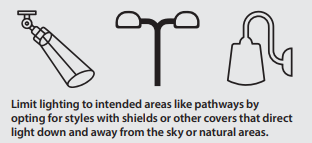Last winter, on December 23rd, I was standing outside in the snow with a very good friend of mine. It was one of those unreasonably long Minnesota goodbyes. The air was cold as always, but the sun had come out and felt so nice on our faces (every other inch of skin being covered to protect from the chill, of course). Finally having a clear day made the snow glow extra white, and as the sun sank lower in the sky, it highlighted the tree trunks against the backdrop of white.
Just as I was about to get in my car and leave, we spotted something small and dark moving on the pure white snow. The thin top layer had been melted and refrozen into a hard crust, a reminder of a warmer day. A tiny black spot was scurrying across the surface of the snow like a spider. We looked closer and saw that it was indeed some sort of bug, still moving despite the cold. Where had it come from, this thing that was so out of place? Did it crawl onto my jacket when we were inside, and fall down onto the cold ground? I lifted it gently with my warm gloved hand, knowing that it would freeze in moments if I didn't. I used to keep bees. Sometimes, when the sun warms up a hive just enough in the winter, bees go outside for a brief cleansing flight which means that sometimes their small bodies got too cold, and I'd find them, little dark spots in the snow. Sometimes, If I found them in time, I could pick them up gently and warm them back to life with my hands, then drop them off at the entrance to their home. But I didn't know where this strange little guy lived, or even what it was. Still, I felt that we needed to save it. Rescue it from these unfortunate circumstances. But we needed to find the best way to help. So we tried to identify it, and quickly found that it was a wingless species called the Snow Fly! |
| If you look closely, you can see the notches where wings normally would be on a fly. |
A quick google search and we'd found some basic Snow Fly facts. Snow Flies, or Chionea, live in northern MN and other snowy areas with healthy woodlands. Having no wings, they live on the ground and are probably quite common, though are rarely seen, especially in the summer. This is most likely due to their size and effective camouflage in the summer months. They are most active in October through November, and February through March. These are very cold times of the year for insects to be active! Apparently, it's not at all uncommon for a Snow Fly to be spotted casually strolling through the snow. Most bugs die off in the winter, or at the very least they find warm places to be. So how can these weird little creatures be most active during these harsh times? According to Wikipedia, Chionea's bodies contain a sugar trehalose that keeps them moving even when the temperatures drop. They have their own antifreeze!
 |
| Another picture where camera decided the texture of my glove was more important than the insect on it. |
We quickly realized that our assumptions had been completely wrong. This little stranger didn't need our help at all. He was perfectly comfortable out on his own in the snow. In fact, it's believed that Snow Flies might be more active in the winter in part because of a lack of predators who can survive winter conditions. So really, he double didn't need our help. He was in his element, exactly where he wanted to be.
My friend and I had made an assumption about what this little creature needed to survive and be happy, but we had based that assumption on all the wrong information. We went into 'rescue' mode, when no one actually needed rescuing, because we thought we knew what was best for a creature we really didn't understand yet.
There is a lesson here. Some people might not look or act the way we expect them to. They might eat lunch alone, spend more time on-line than we do, dress differently than we do, or smile less. Any time people act differently, we're tempted to assume that they are unhappy or unhealthy. I'll strive to catch myself in those assumptions, and work to treat people in ways that are helpful to them, not just the ways that I assume are most helpful. It might suit someone just fine to be a little different. Something that would be unhealthy behavior for me might work great for someone else. When in doubt, I can always ask, as long as I follow through by listening. If we can listen to ourselves about what we need, and listen to others when it comes to what they need, we can truly help each other. It doesn't really matter what our society says we should want, we know what suits us best. Just like the Snow fly knows it's safe and free in the snowy woods of northern Minnesota.
.




















































